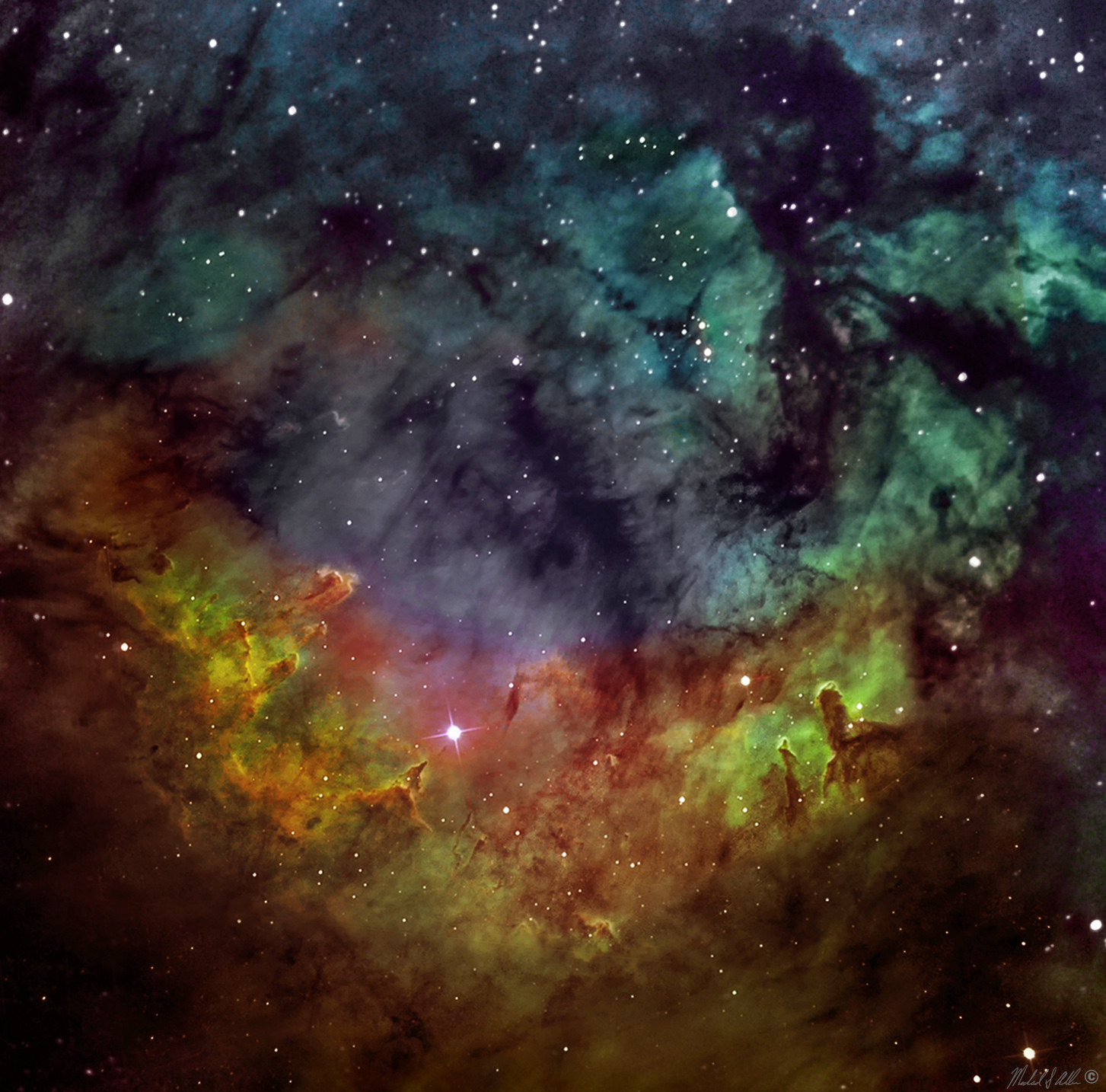Optics: 12.5″ Planewave CDK125, & 6″ Takahashi FS152,f6
Mount: Software Bisque Paramount MX+
Camera: FLI PL16803
Filters: Astrodon Ha, Sii, Oiii 3nm
Dates/Times: Oct 2014, Feb 2018
Location: Adler Earth and Sky Observatory, Jackson Hole, WY
Exposure Details: CDK125, Ha=45x20min,1:1,Sii=40×20,4:4,Oiii=45×20,4:4, 130 images, 45 hr, FS152, total 50 images, 17 hr,
Acquisition & Guiding: MaximDL/TheSkyX, MOAG, SBIG STi
Processing: MaximDL, Photoshop CC2019
NGC 7822
Original price was: $65.00.$52.50Current price is: $52.50.
NGC 7822 Hot, young stars and cosmic pillars of gas and dust seem to crowd into NGC 7822. At the edge of a giant molecular toward the northern constellation Cepheus, the glowing star forming region lies about 3,000 light-years away. The image includes data from narrowband filters, mapping emission from atomic oxygen, hydrogen, and sulfur into blue, green, and red hues. The emission line and color combination has become well-known as the Hubble palette. The atomic emission is powered by energetic radiation from the central hot stars. Their powerful winds and radiation sculpt and erode the denser pillar shapes and clear out a the central area . Stars could still be forming inside the pillars by gravitational collapse but as the pillars are eroded away, any forming stars will ultimately end. This field of view spans over 40 light-years at the estimated distance of NGC 7822. The detailed lower portion of the image was taken by a 12.5″ Planewave CDK125 and with a Finger Lake Instruments PL16803. The outer portion of the image was taken through a 6″ Takahashi FS152 telescope and the PL16803 camera. To make this image there were a total of 130 images taken over a period of 45 hours with the CDK125, and 50 images over 17 hours from the FS152.


